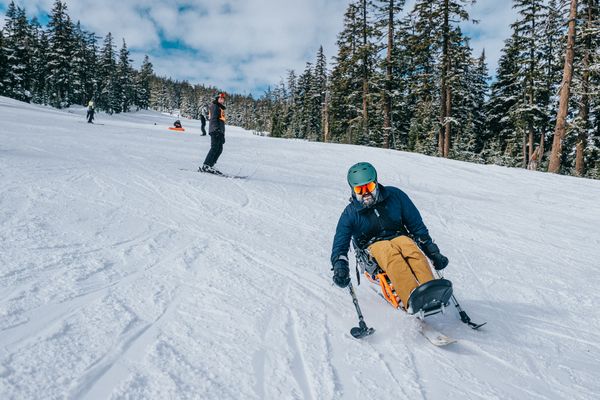Vail Resorts (MTN 3.37%) disappointed investors by announcing a slight sales decline for its fiscal first quarter and an expanding net loss for the period. Wall Street reacted to the news by sending shares down by 16% immediately following the report.
In a subsequent conference call with analysts, the ski resort chain explained why those worsening sales and profit trends aren't worrying the management team, and why investors can be confident that Vail's long-term growth outlook is intact.
Below are a few highlights from that presentation.

Image source: Getty Images.
First-quarter losses aren't shocking
Our first fiscal quarter historically operates at a loss, given that our North American mountain resorts are not open for ski operations during the period.
-- CEO Rob Katz
The company has been bulking up its offseason revenue sources by adding things like mountain zip-lining tours and outdoor water parks at its resorts. But modest success there hasn't changed the fact that the summer months produce operating losses because of the lack of ski revenue in its U.S. and Canadian resorts. In fact, reported net loss expanded to $108 million from $28 million a year ago.
Still, the Perisher property in Australia saw solid ski demand, and its North American locations attracted more warm-weather visitors. The operating loss included several one-time charges that, once accounted for, make the period consistent with Vail's recent history. "Overall, we were pleased with our results," Katz explained.
Season pass sales are running strong
We are very pleased to see double-digit revenue growth in our season pass program after a very strong record performance last year.
-- Katz
Vail sold 21% more season passes this period, with total revenue rising 13% through the first few days of December. Stripping out the impact from its discounted military pass, sales volumes were up 8% while total revenue rose 10% with help from a 3% average price increase.
That price boost is down from the 5% increase that Vail had been posting in past years, which implies some pricing challenges. But management blamed the slowdown on their deliberate effort to expand season pass sales to lower-frequency guests.
Spending money to make money
We remain committed to reinvesting in our resorts, creating an experience of a lifetime for our guests and generating strong returns for our shareholders.
-- Katz
Vail plans a surge of investment spending across its resorts on expensive projects including lift upgrades and other typical maintenance initiatives. This year's plan also includes installing integrated snow production capabilities that could add precious days to its ski seasons beginning in late 2019. Overall, these initiatives will require about $180 million in cash to mark a significant increase from last year's $150 million capital plan.
Executives said they were aware that this spending is higher than usual, but they noted that the snow manufacturing capabilities will add value to season passes, including by adding more consistent ski opportunities around the Thanksgiving holiday.
Wait and see
Given our first-quarter results and the indicators we are seeing for the upcoming season, we are reiterating our resort-reported EBITDA guidance for fiscal 2019 that was included in our September earnings release. That said, the North American ski season has just begun, with our primary earnings period still in front of us.
-- CFO Michael Barkin
Vail affirmed full-year guidance that calls for adjusted earnings to range between $718 million and $750 million compared to $617 million in fiscal 2018. The kickoff to the ski season has been encouraging, with its Colorado-based resorts enjoying the best conditions they've seen in nearly a decade. The Whistler Blackcomb property in Canada, on the other hand, had a sluggish start as snow totals have been weak.
In any case, with its biggest earnings-producing period just beginning, investors will have to wait until Vail's next official update to find out how closely actual results tracked management's optimistic forecasts.






